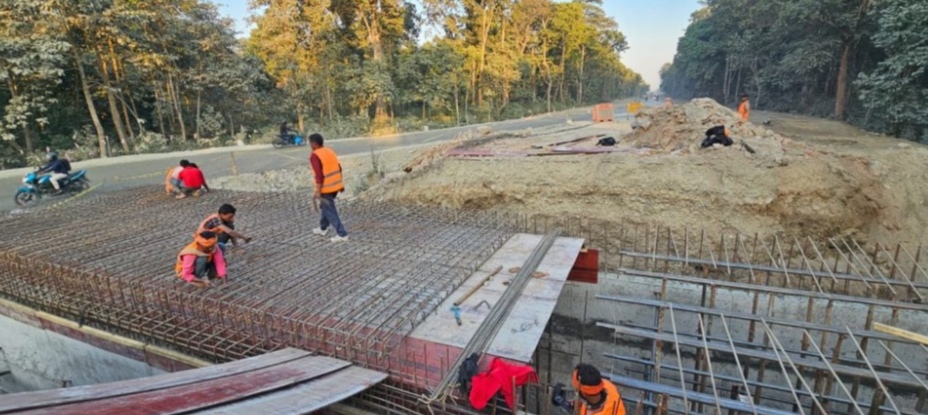Damak – The construction of the Asian Highway, a transformative infrastructure project aimed at connecting Asian nations through an integrated road network, has made significant progress. Within a year of its commencement, 12 percent of the work has been completed, paving the way for enhanced regional trade and connectivity.
The project focuses on upgrading 120 kilometers of road from Kakarbhitta to Laukahi under the Asian Highway No. 2. However, construction is currently ongoing for a 95.76-kilometer stretch, divided into two segments: the eastern section (Kakarbhitta to Sitapure) and the western section (Sitapure to Pachrukhi, west of Itahari).
According to Sunil Babu Pant, Chief of the Damak office overseeing the eastern section, the project aims to blacktop at least 20 kilometers of road within this fiscal year. Similarly, Jagat Prajapati, Chief of the Western Section, confirmed plans to complete the first phase of blacktopping on 10 kilometers in the same period.
The highway, connecting Nepal to Bangladesh via India in just 27 kilometers, is expected to revolutionize international trade. Rajendra Raut, President of the Koshi Province chapter of the Nepal Chamber of Commerce and Industry, emphasized its potential to reduce import-export costs and integrate rural enterprises into global markets.
The road network originates in Bangkok, Thailand, traversing Myanmar, Bangladesh, and India before entering Nepal at Kakarbhitta. It continues along Nepal’s East-West Highway and extends to Delhi, India, culminating in Karachi, Pakistan.
The project, supported by the Asian Development Bank with an estimated budget of $300 million, began on February 1, 2024, with a target completion date within three years. The scope of the work includes constructing 48 bridges, 10 overpasses, and hundreds of box culverts. Progress in the eastern section includes the construction of 21 bridges and 92 out of 140 box culverts. In the western section, foundation work for three major bridges – Ratuwa, Bakraha, and Lohandra – has been completed, alongside 47 out of 169 box culverts.
While forested areas have shown greater physical progress, urban zones face challenges, particularly due to the presence of utility poles. Prajapati confirmed ongoing coordination with the Nepal Electricity Authority to address these obstacles.
The road is being built in three categories: urban (50-meter width), forest (24-meter width), and rural (33-meter width) areas. Urban sections will feature cycle lanes, footpaths, and drainage systems, along with six signature bridges planned at key locations.
Construction is being undertaken collaboratively by Nepalese firms Kalika and Tungi Construction, alongside a Chinese company.
This ambitious project symbolizes a leap towards regional integration, promising to enhance economic opportunities, streamline transportation, and foster Nepal’s role as a critical hub in the Asian Highway network.